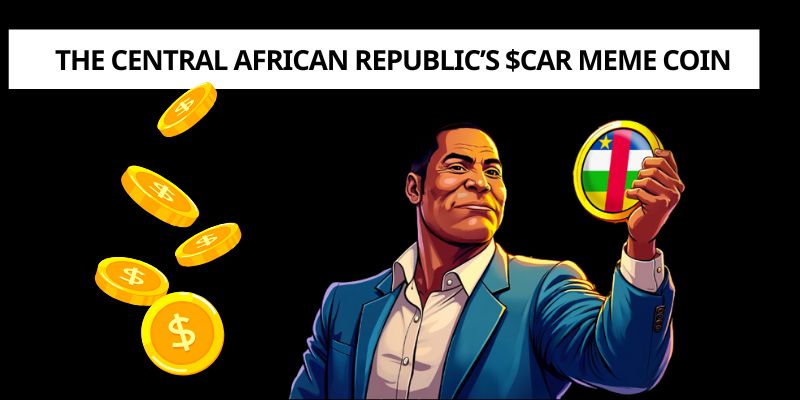The Central African Republic’s $CAR Meme Coin – Experiment, Hype, or Scam?
In early 2025, the Central African Republic (CAR) made global headlines with the launch of its own meme coin, $CAR, in a bold—and controversial—bid to put the nation on the digital map. Announced by President Faustin-Archange Touadéra, the $CAR meme coin was touted as an “experiment” to unite the country and promote national development. Yet, within days, the coin’s value soared and crashed, sparking debate over its legitimacy and the risks of state-backed crypto ventures.
Contents
The Launch: National Ambition Meets Crypto Hype
The Central African Republic is one of the world’s poorest nations, yet it has shown a remarkable appetite for digital innovation. In 2022, it became the second country globally to recognize Bitcoin as legal tender, following El Salvador. The $CAR meme coin, launched on the Solana blockchain, was positioned as a way to “unite people, support national development, and put the Central African Republic on the world stage in a unique way,” according to President Touadéra.
The launch was accompanied by a slick social media campaign and the promise of a new economic experiment. Within hours, $CAR’s market capitalization reportedly peaked at over $900 million, drawing attention from crypto enthusiasts and speculators worldwide.
Volatility and Controversy
The initial euphoria was short-lived. The price of $CAR plummeted by more than 75% within days, and by some estimates, the coin lost over 90% of its value in a matter of weeks. The wild volatility was characteristic of meme coins, which often rely more on hype than utility or underlying value.
Compounding the chaos were allegations that the launch video was a deepfake and questions about whether the initiative was truly government-backed or a sophisticated scam. Critics pointed out that similar meme coin projects have resulted in significant losses for retail investors, and that the CAR’s previous forays into digital assets—such as the failed Sango coin—had ended in disappointment.

A Pattern of Risky Experiments
The $CAR meme coin is not the CAR’s first experiment with cryptocurrency. In 2022, the government attempted to attract foreign investment by offering citizenship in exchange for a $60,000 crypto investment, a scheme later ruled unconstitutional by the nation’s highest court. President Touadéra’s embrace of digital assets has been both praised for its ambition and criticized for its lack of transparency and regulatory safeguards.
The $CAR coin’s rapid rise and fall echo broader trends in the meme coin market, where celebrity endorsements and viral marketing can drive massive, short-lived gains followed by equally dramatic crashes. The phenomenon is not unique to CAR—similar stories have played out globally, with investors often left holding worthless tokens when the hype subsides.
The Road Ahead: Hope or Hype?
As of April 2025, the $CAR meme coin continues to trade on various exchanges, with a market capitalization fluctuating around $13 million and a daily trading volume in the millions. While the coin’s price remains far below its peak, the project has succeeded in drawing global attention to the Central African Republic and sparking debate about the role of digital assets in national development.
For the CAR, the $CAR meme coin represents both an opportunity and a risk. If managed transparently and with proper safeguards, it could foster innovation and financial inclusion. However, the volatility and controversy surrounding its launch highlight the dangers of embracing crypto hype without adequate oversight.
The $CAR story is a microcosm of the broader cryptocurrency landscape: a blend of ambition, innovation, and risk. Whether it will ultimately be remembered as a pioneering experiment or another cautionary tale remains to be seen. For now, it stands as a testament to the power—and peril—of digital finance in the modern era.